Nuts and Bolts for a Red and Blue Sensory Table
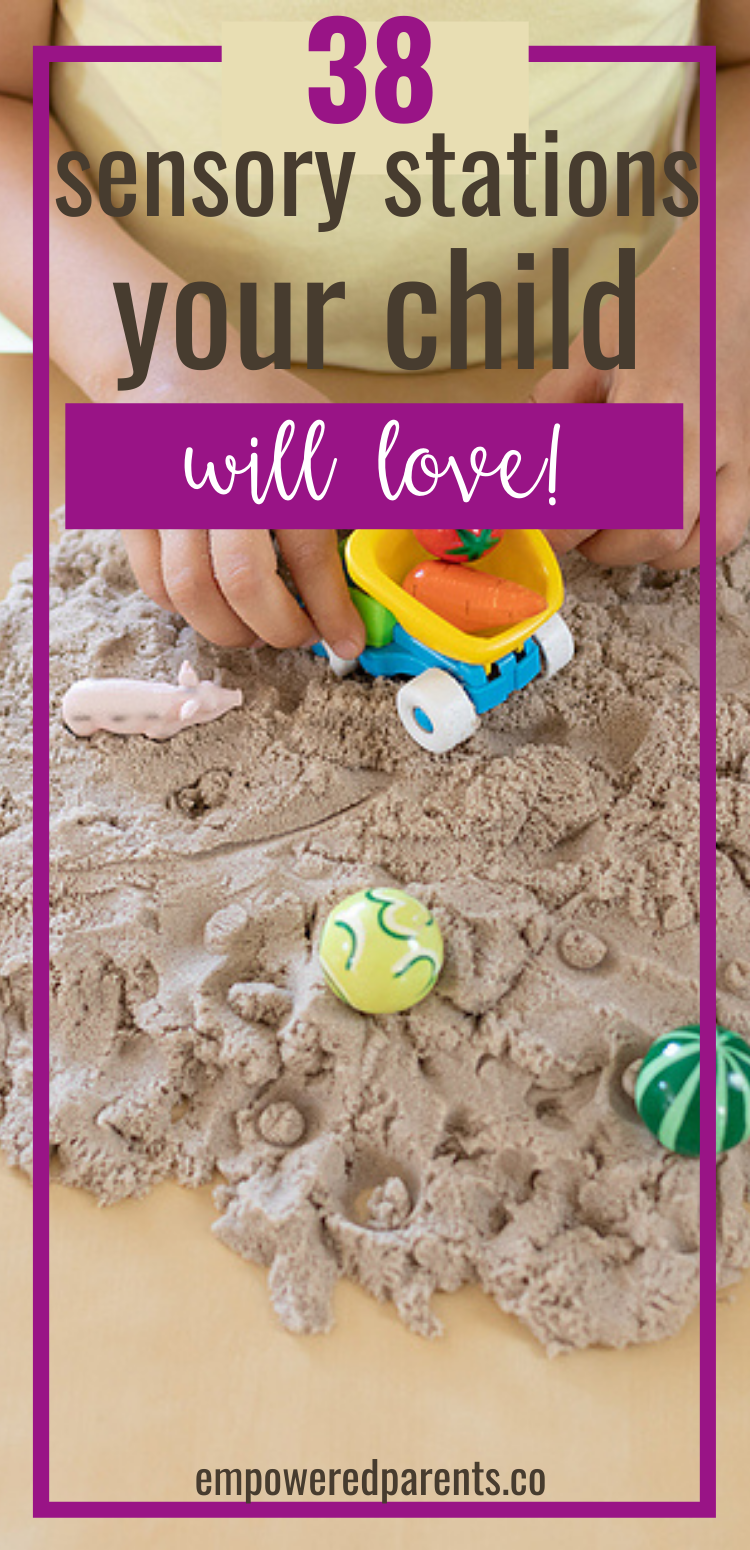
Setting up sensory stations in your home or classroom can be a fun way to engage children of all ages in sensory play.
Here's why you should incorporate them into your daily routine as well as some great ideas to try.
What is a Sensory Station?
A sensory station is simply an area that has been set up with the purpose of engaging kids in play that stimulates the senses.
These activities stimulate children's senses of sight, touch, hearing, taste and smell.
Don't forget that proprioception (sense of body awareness) and the vestibular system (responsible for balance, movement, direction, etc.) are also important aspects of a child's sensory development.

How Do You Set Up a Sensory Station?
There are many different ways to set up stations:
- Set up some permanent ones at home or at school that you want kids to always have access to – like a sand table or water table (but change the props regularly).
- Create sensory stations to go specifically with your preschool themes – such as a dinosaur and playdough station.
- Have indoor and outdoor stations.
- Set up a few stations and rotate them every few days to keep them fun and engaging.
- Have a sensory area always set up that kids play in every day, rotating freely between the stations.
- Make official stations with a designated area, label or chart showing kids what the stations are.
- Or be less formal and simply incorporate sensory play without making a separate area for it.
- Some sensory areas are permanent or don't need to be specially set up as they naturally encourage sensory activity – such as a sandpit, a low wall kids like to walk along (developing balance) or a jungle gym (great for developing the vestibular system).
- If encouraging sensory learning at home, you may sometimes want to just introduce a sensory activity without necessarily setting up a formal table or area.
There are no rules and you can change the activity to suit your needs, time, and your kids.
Often, the mere act of setting up a station acts as an invitation to play and inspires children's imagination.
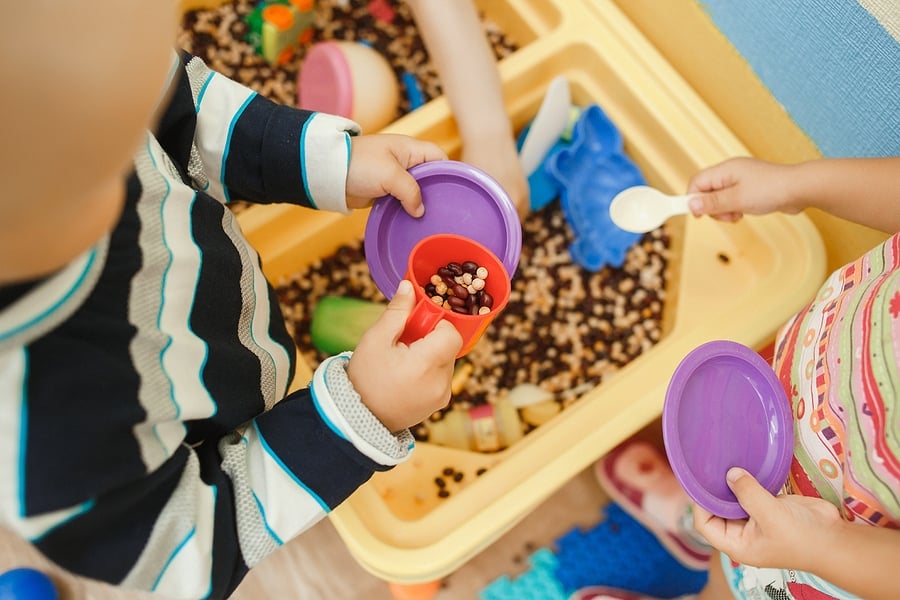
Think how enticing a table laid out with playdough, toy dinosaurs and natural materials is to a young child. This is far more likely to spark off pretend play than dinosaurs tossed into a big toy box and playdough lying around.
The same materials are still available but the suggestion to use them together is often what inspires the play.
Children are very good at using their imaginations and creating their own play, but providing opportunities for them to "stumble" on new play ideas only deepens their experiences.
Another example is having a permanent balancing beam in a playground which a child may seldom play on. Set up a temporary outdoor balancing area with all sorts of fun props and most kids would be inspired to give it a go.
Also, bear in mind whether you are setting up sensory stations for toddlers, preschoolers or kindergarteners. Most stations can be adapted to the age of the kids.
The Benefits of Sensory Stations
There are many benefits of sensory play in early childhood, including:
- Cognitive and brain development
- Language and problem solving
- Social and emotional development
- Sensory development
- Motor skills
- Creativity
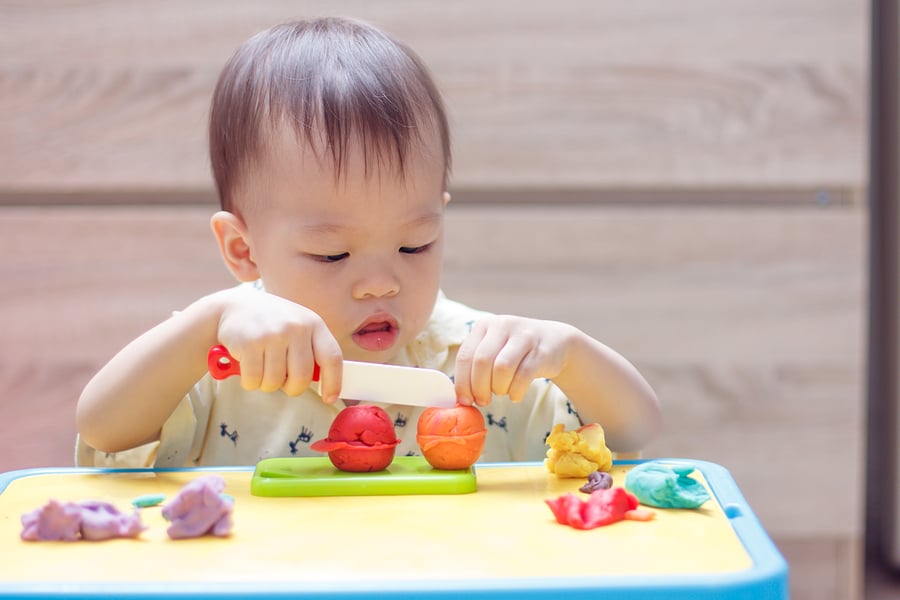
Setting up these stations has positive effects on all areas of kids' development and is well worth taking the time to set them up. There are far more benefits of hands-on learning than, say, giving preschoolers worksheets.
This post contains affiliate links for educational products that I personally recommend. If you purchase through one of them, I earn a commission at no extra cost to you. Read the terms and conditions for more details.
38 Simple Sensory Stations
Here are some sensory station ideas that are fun and easy to set up. Change them as you need and improvise wherever possible.
They are a mixture of ideas for sight, taste, hearing, touch, smell, vestibular and proprioception.
1. Sand Play
First and foremost, before you look for fancy sensory ideas, remember that the good old-fashioned sandpit is the best place for learning.
Sandplay (and water play) are the absolute best sensory play activities and should be available for kids as often as is possible.
2. Beads
Set up an area with beads of all colours, sizes and shapes. Add some containers, scoops or shovels.
Beads can be used in so many educational activities. You can thread beads, use them in art activities, sorting activities, and so much more.
3. Primary Colour Mix
Set up a table with finger paints in the three primary colours – red, blue and yellow – and some large finger paint paper (get it here). Allow kids to experiment with mixing colours.
4. Playing with Sound
Create a sensory play station with objects that make a sound – add musical toys, a few instruments, musical puzzles, music boxes, instruments, etc.
5. Taste Types
Introduce children to the five basic tastes – sweet, salty, sour, bitter and umami (savoury/meaty) by offering small pieces of food or drinks that represent different taste types. [source]
Lay them out in labelled groups (use pictures for young kids) in baskets so that children can taste a few of each type and learn the difference between them.
6. Coloured Rice
Make your own coloured rice using just vinegar and food colouring. Lay out a few baskets with different coloured rice, as well as some paper and glue.
Let kids create something fun.
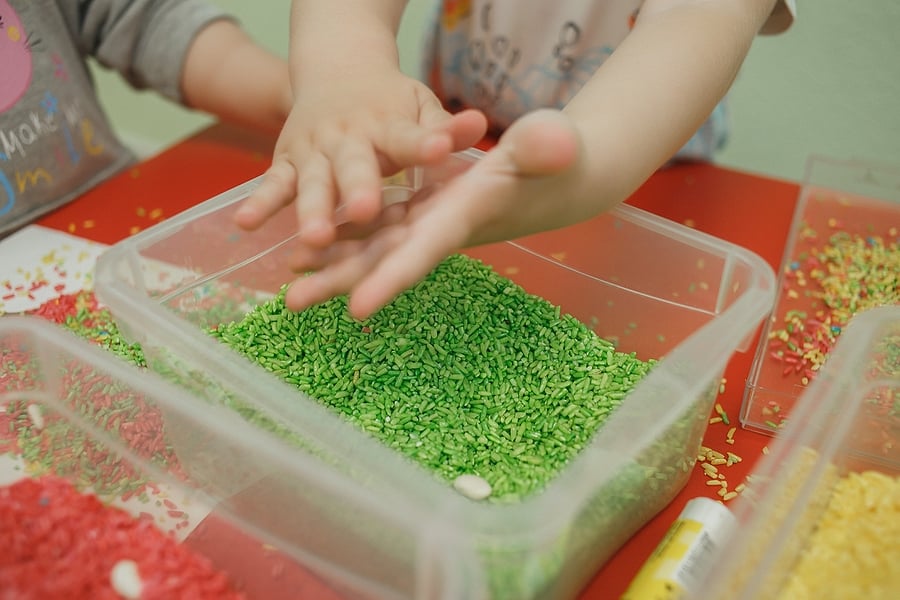
7. Nature Smells
There are so many smells found in nature that this would make a great idea for a smelling table.
Find an assortment of flowers, bark, strong-smelling fruits like lemons and other items that have a scent. Invite kids to smell these by labelling the station or showing a picture of a nose.
Don't forget to take kids outside after it rains for a natural sensory treat.
8. Story Corner
Make a cosy spot in the room to listen to audio stories (like these). Provide headphones or earplugs.
Add beanbags or cushions to make the area comfy and inviting.
9. Classical Corner
This sensory area doubles as a calm-down zone or a place for those who need some quiet time.
Provide classical music or any other relaxing music with headphones/earphones. Make the area relatively private by using bookshelves/large cushions to cordon off the area.
10. Legumes and Grains
Legumes and grains are great not only for eating but also for doing all kinds of art and learning activities with kids.
Make a sensory station with beans, lentils, barley, oats and any others you have at home.
This could be a fun sensory art project if you add some paper and glue.
11. Blind Tasting
For this station, each child must wear a blindfold while a peer or adult gives them different foods to taste. Kids must guess what they are eating.
Try different foods such as raw veggies, fruits, sweets, cereals, dried fruits, biscuits, etc.
12. Musical Instruments
Offer all kinds of instruments such as triangles, small drums, xylophones, flutes and tambourines.
Include homemade instruments such as rice shakers, box drums and pot lids as cymbals.
13. Blindfolded Block Play
Set up blindfolds (scarves) and a set of wooden blocks (here's a good set). Challenge kids to put on a blindfold and build something with the blocks, just by using their sense of touch.
14. Matching Cards
Set out a table with pairs of matching picture cards and let kids find the pairs (Get your own cards by downloading the FREE set of printables at the end of the post).
These can be as complex or as simple as you like – such as colour cards for toddlers or complex pattern cards for older kids.
15. Sight Station
Let kids explore and play with different tools that aid sight, such as magnifying glasses, binoculars, microscopes, old eyeglasses and sunglasses.
16. Light Table
A light table is a wonderful asset to have in a classroom or at home and is great for building observational skills.
The light draws kids' attention to what they are playing with and they can see things in detail, and from a new perspective.
Great objects to place on a light table are coloured plastic cups, 3D shapes, transparent counters, old x-rays and almost anything that kids would enjoy studying in the light.
Learn how to make your own DIY light table.
17. Kinetic Sand
Prepare a kinetic sand sensory table (get some sand here). Include some props such as cups, figurines, marbles, toy vehicles and anything else you can think of.
.
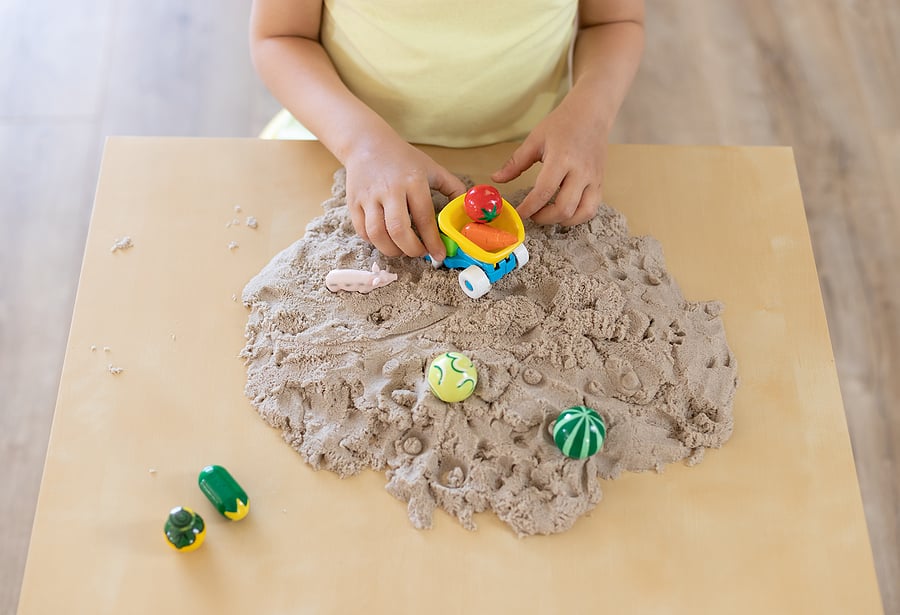
18. Scented Markers
Have a table with paper and scented markers for a fun creative experience. Buy them here.
19. Feely Bags
Place bags with different textured objects in them and let kids reach into them and guess what the objects are by feeling them.
Place random objects together or pick a theme – such as fruits or 3D shapes – and fill the bag with related objects. For young toddlers use only familiar items, like a sippy cup and a favourite bunny.
20. Kim's Game
Set up a station to work on visual memory. You will have to man this station or teach kids to play in pairs and test each other.
This is how you play:
- Place a few objects on a tray.
- Give the child some time to look at all the objects and try to remember them.
- Cover the objects with a scarf or towel.
- Ask the child to recall all the objects.
Visual memory is also an important pre-reading skill.
21. Buttons
Have a box of buttons at home? You can do lots with them. Place them into trays to set up a button sensory table. Add props such as egg boxes, cups, playdough and anything you can think of.
Here are more button activities for preschoolers.
22. Find the Colour
This is a fun activity to teach younger children colour recognition.
Lay out several baskets or boxes, clearly labelling what colour they are (wrap the box in coloured paper or lay a coloured napkin in the basket).
Place a box of mixed objects on the table – to be sorted into the relevant colours and placed in the correct boxes.
Or, tell kids to go around the class or house, find coloured objects and categorise them into the correct colours.
23. Playdough with Tools
There are so many benefits of playdough in early childhood that this should be a regular activity.
Create a table with playdough and tools and shapes to slice through it, mould it and cut shapes out of it.
Make your own homemade playdough.
24. The Bath
One of the best sensory stations is already set up in your home – the bath.
Try these ideas for some sensory fun in the bathtub.
25. Sprinkler Fun
Just as fun as the bath – a sprinkler can also be set up at school. On a hot day, don't hesitate to switch on some water and let kids play.
This is a great sensory learning experience.
26. Water Play
Not quite brave enough for the sprinkler or need a water activity kids can do every day? Water play is an absolute must for all children.
Use a water table (this one is a hit) or improvise with any large trough and use containers, bottles, funnels and other props to get the learning happening.
27. Loose Parts
Set up a station for loose parts play. This could be on a table, in a water table, large trough or on the carpet.
Here are some examples of objects you can offer:
- Beads
- Bottle caps
- Buttons
- Corks
- Egg cartons
- Foam shapes
- Ice cubes
- Nuts and bolts
- Pastas
- Pom-poms
- Seeds
And anything else you can think of. The only limit is your imagination.
28. Flour
Have a large bucket or tray with some flour and props for some fun messy play.
29. Make a Tunnel
Set up a place for kids to crawl though. Use a tunnel (like this one) or create a tunnel-like structure by improvising.
This is great for teaching kids about their position in space.
30. Trampoline
A trampoline is tons of fun and amazing for stimulating the vestibular system.
This indoor one is great for all ages.
31. Exercise Station
Part of developing proprioception is learning to feel the sense of force and effort that is exerted when pushing, pulling and lifting.
Make an exercise station with some lighter "equipment" that can be used as weights. Add some resistance bands, yoga mats and anything else you have at hand and let kids use their imagination.
They will also learn to use their own weight as resistance when doing exercises on a mat.
32. Gardening
Create a gardening corner with some seeds, potting soil, empty pots and watering cans.
Teach kids to fill a pot with soil, plant a seed and water it daily. This could be set up permanently with kids watering plants on a roster. Or, give this duty to a child who shows an interest in gardening.
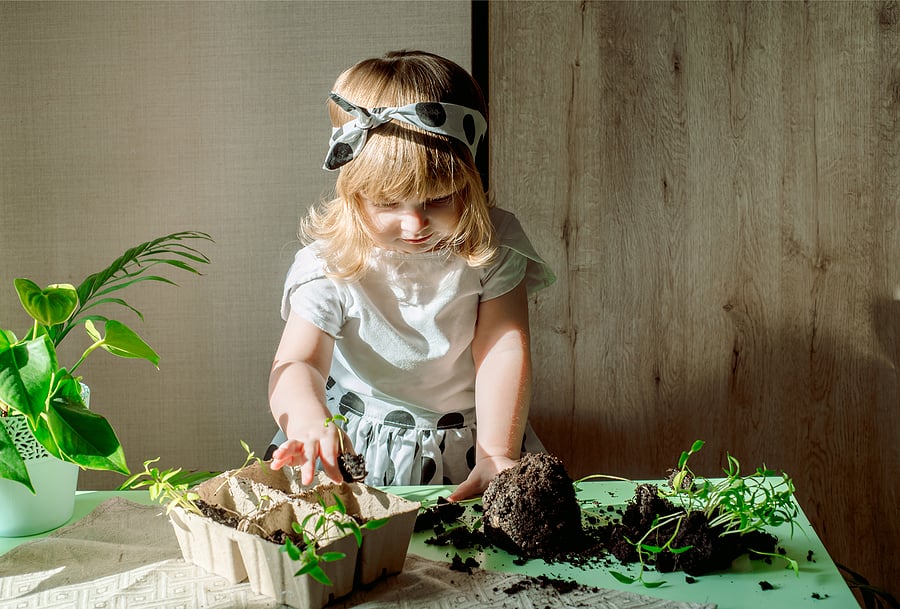
33. Balancing Station
Preferably outdoors, but it can also be done indoors, make a balancing station by adding equipment such as a balancing beam, bucket stilts, skipping ropes and a therapy ball (like this one).
Make a tightrope by laying out a long rope or a long strip of tape and have children practise to be tightrope walkers, carefully placing one foot in front of the other.
34. Twister
Twister is a great game for stimulating the vestibular system.
Leave a mat out (buy it here) and see if kids start their own game of twister, being careful not to get too tangled up.
35. Dance Station
Dancing is wonderful for developing a sense of the body's movement through space.
Have some music, scarves and other dance props set up.
36. Jungle Gym
Your jungle gym is a sensory station that's already set up.
It gets kids hanging upside down, climbing and moving the fluid in the inner ear (the vestibular system).
37. Playground or Garden
The garden or playground is also the perfect place for sensory development as kids run, play chasing games and get involved in physical movement that involves learning about directions and speed of movement.
38. Construction Play
Construction play is an educational experience that also stimulates the senses. Kids should construct regularly.
Set up a place where kids can always have access to construction materials but rotate them frequently to keep them interesting.
Get instant access to FREE educational printables here. You'll receive puzzles, sequencing cards, 'find my mom' cards, memory games, lotto games and a pack of short stories.
Would you like a year of done-for-you, ten-minute activities to teach your 3-5-year-old through play? Get your copy of the Learning Through Play Activity Pack for only $27.
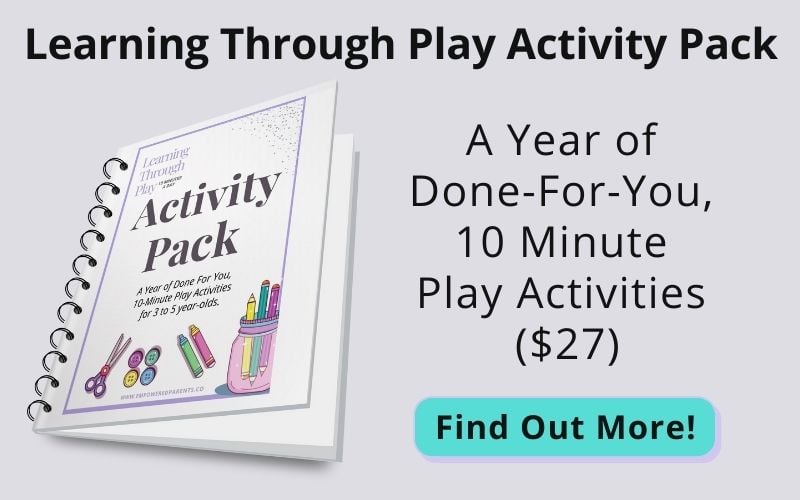
Source: https://empoweredparents.co/sensory-stations/
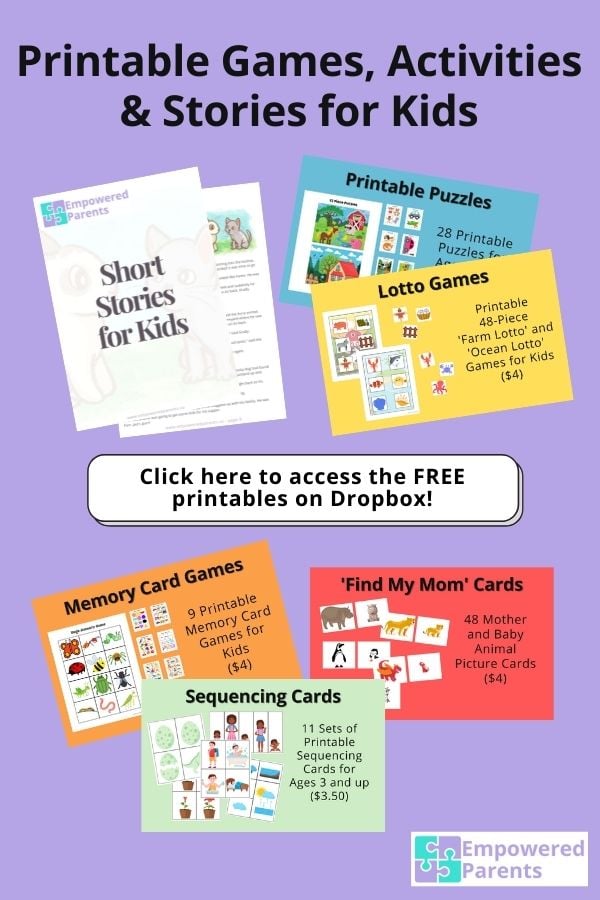
0 Response to "Nuts and Bolts for a Red and Blue Sensory Table"
Post a Comment